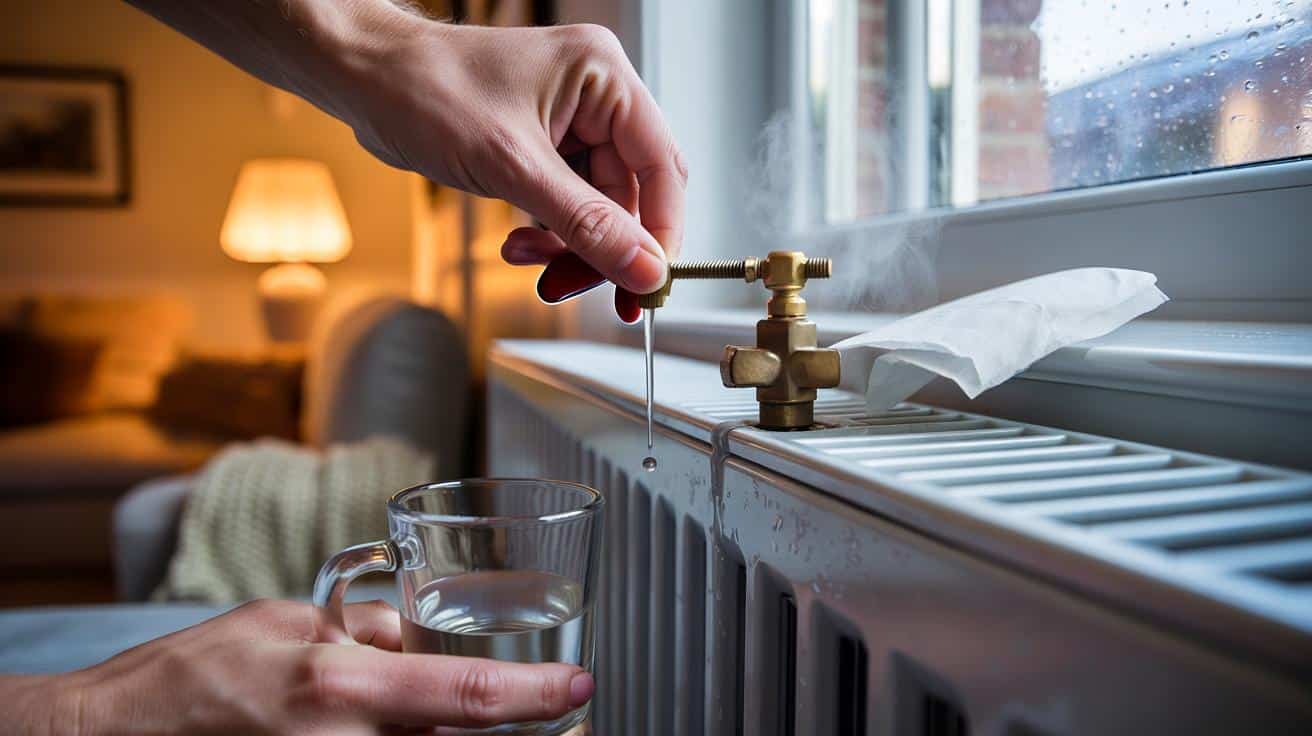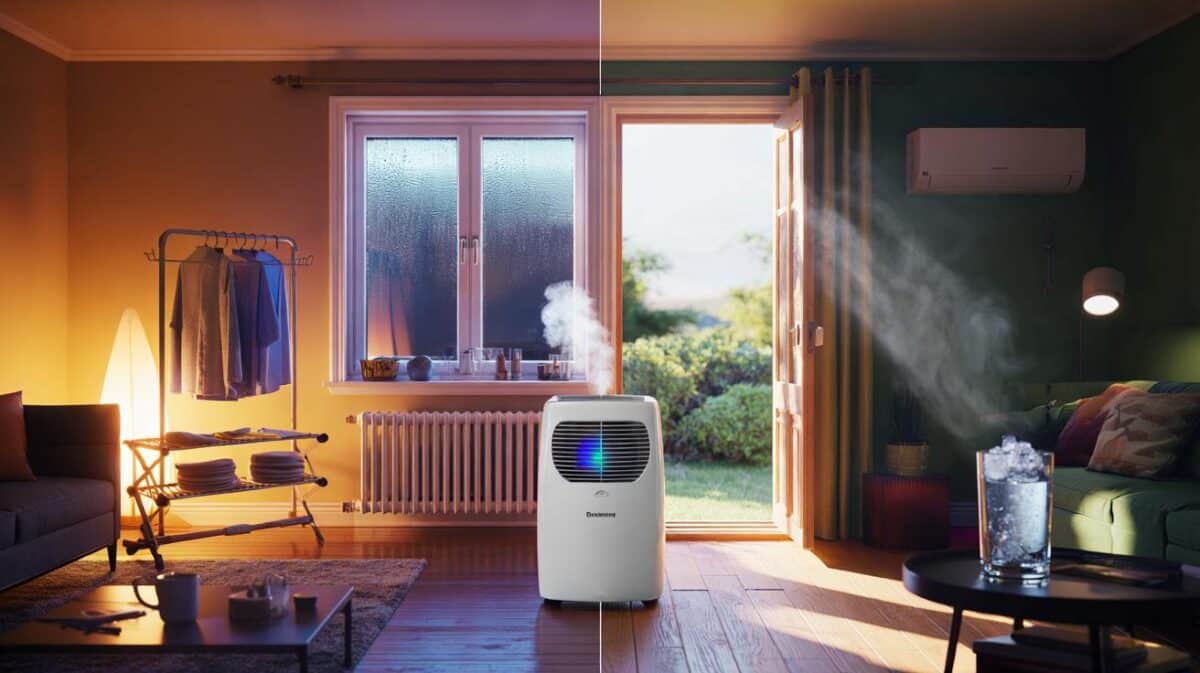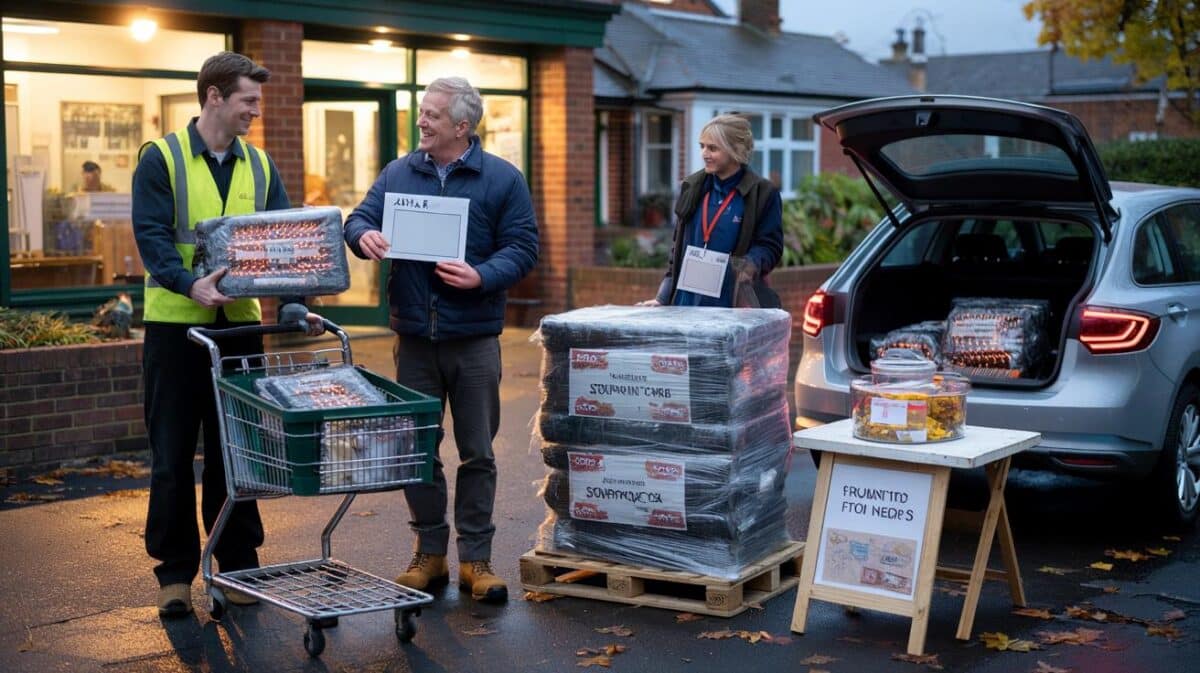No new boiler, no fancy thermostat, no plumber on speed dial. Just a tiny tweak with a key the size of a 50p piece — and my home heated twice as fast.
It was a Saturday morning in a draughty terrace, the kind where the hallway steals your heat and the kettle steams the windows for company. The boiler coughed into life, pipes clicked, and the living room radiator glowed… slowly. My partner pulled on a jumper, then a blanket. The timer was right. The heat was late. I touched the top of the radiator and it was cool, like it had a secret it didn’t want to share.
That’s when I heard the faintest hiss.
The signs were there — I just didn’t want to see them
I’d noticed the top of certain radiators stayed cool for ages, while the bottom warmed first. The far bedroom lagged by half an hour, like it was sulking at the end of the line. I turned the thermostat up, and the boiler worked harder, but the room didn’t follow. The heat felt stuck somewhere out of reach. Little things piled up: a gurgle in the hallway, a shiver at breakfast, a bill that made no sense for how little comfort I was getting.
One evening a friend, the sort who owns a toolbox that looks loved, pressed his hand across the radiator in three slow passes: bottom, middle, top. “Air,” he said, as if diagnosing a stubborn child. He handed me a radiator key and a mug. “Cup under the valve. Quarter turn. You’ll hear it.” I didn’t believe a sip of air could make a winter feel shorter. A minute later the radiator exhaled like a cat sighing. Warmth followed.
If a radiator’s top stays cool while the bottom warms, you’re not dealing with a lazy boiler — you’re fighting physics. Trapped air collects at the highest points, blocking hot water from filling the panel. Less metal meets hot water, so less heat reaches your room. It’s like trying to make tea with a kettle half full of bubbles. Give that air somewhere to go and water rushes back in, spreading heat faster across the whole surface. That’s why the fix feels disproportionate to the effort. Air out. Heat in. Speed up.
The tiny tweak I wish I’d known years ago
Here’s the move: turn your heating off, wait a few minutes, and grab a radiator key and some kitchen roll. Start with the radiator highest in the house. Find the little square bleed valve at the top. Place a cup beneath it. Turn the key slowly — just a **quarter turn**. Listen for the hiss. Keep it open until water, not air, reaches the lip, then close it snugly. Move room to room. When you’re done, glance at the boiler gauge and bring it back to **1.2–1.5 bar** if it’s dipped. That’s it. No drama. No parts.
Don’t rush it. Don’t wrench the valve wide. And if the water spits, that’s fine — this is messy work pretending to be delicate. We’ve all had that moment when a simple job spirals into a mop-and-swear session. Let’s be honest: nobody actually does that every day. If a radiator’s cold at the bottom rather than the top, that’s likely sludge, not air — a different job entirely. If your TRV head (the numbered cap) is stuck, pop it off and make sure the little pin moves. Tiny things stall heat.
This little ritual taught me patience and paid me back in minutes saved every morning. I could actually hear the air fizzing out like a hidden kettle letting off steam. Then the warmth turned even and quick, as if someone had removed a speed limiter.
“Ninety per cent of slow radiators I’m called to are solved by bleeding and topping the pressure,” a heating engineer in Leeds told me. “It’s the first thing I try because it’s the simplest.”
- Start high, finish low — air rises.
- Small turns, short hisses, tidy close.
- Watch the pressure and aim for mid-gauge.
- Check a week later — systems burp twice.
What changed — and why it matters on a cold Tuesday
After that quarter-turn ritual, the difference was instant. The living room reached comfort before the news headlines finished. The back bedroom caught up instead of trailing behind. I turned the thermostat down a notch because I didn’t need the boiler sprinting to make up for lost time. The house felt calmer, less frantic. It’s a feeling you notice most when you’re half awake, shuffling for socks, and warmth finds you first.
Bleeding radiators isn’t glamorous. It’s not a smart gadget or a viral hack with neon arrows. It’s simple housekeeping that keeps heat moving like it should. If you want to go further, balancing your radiators with the lockshield valves can fine-tune flow so every room heats evenly. That’s a different dance — tiny adjustments, a thermometer, patience — but the principle is the same: let water do its job without fighting hidden pockets of air.
I still keep that radiator key near the front of the kitchen drawer, next to the corkscrew and the tape measure. One tiny tool, outsized payoff. And if your system is losing pressure daily or a radiator refuses to warm even after bleeding, that’s your cue to call a pro. **Small fixes are brilliant until they’re not the fix.** Most days, though, this little tweak is all you need to make winter feel shorter — and your mornings, kinder.
| Key points | Detail | Reader Interest |
|---|---|---|
| Bleed radiators first | Quarter turn until water appears; start upstairs | Quick win; instant warmth |
| Watch boiler pressure | Top to 1.2–1.5 bar via the filling loop | Prevents lockouts and cold spells |
| Know the exceptions | Cold bottom = sludge; stuck TRV pins need freeing | Stops frustration, saves time |
FAQ :
- How often should I bleed radiators?Once or twice a year is usually enough, and after any work on the system. A quick check at the start of autumn pays off.
- Is it safe to bleed when the heating is on?Do it with the heating off and the radiators cooled. You’ll avoid hot spurts and get a steadier release of air.
- What if the radiator stays cold at the top after bleeding?Try again, then check the boiler pressure. If it still fails, the valve may be blocked or the TRV stuck — time to investigate or call a pro.
- Why did my boiler pressure drop after bleeding?Air left the system, so water filled that space. Use the filling loop to bring it back to the middle of the gauge.
- Will this help with a heat pump system?Yes, air harms heat transfer in any hydronic system. Bleeding helps, though heat pumps also rely on balanced flow and lower temperatures.








